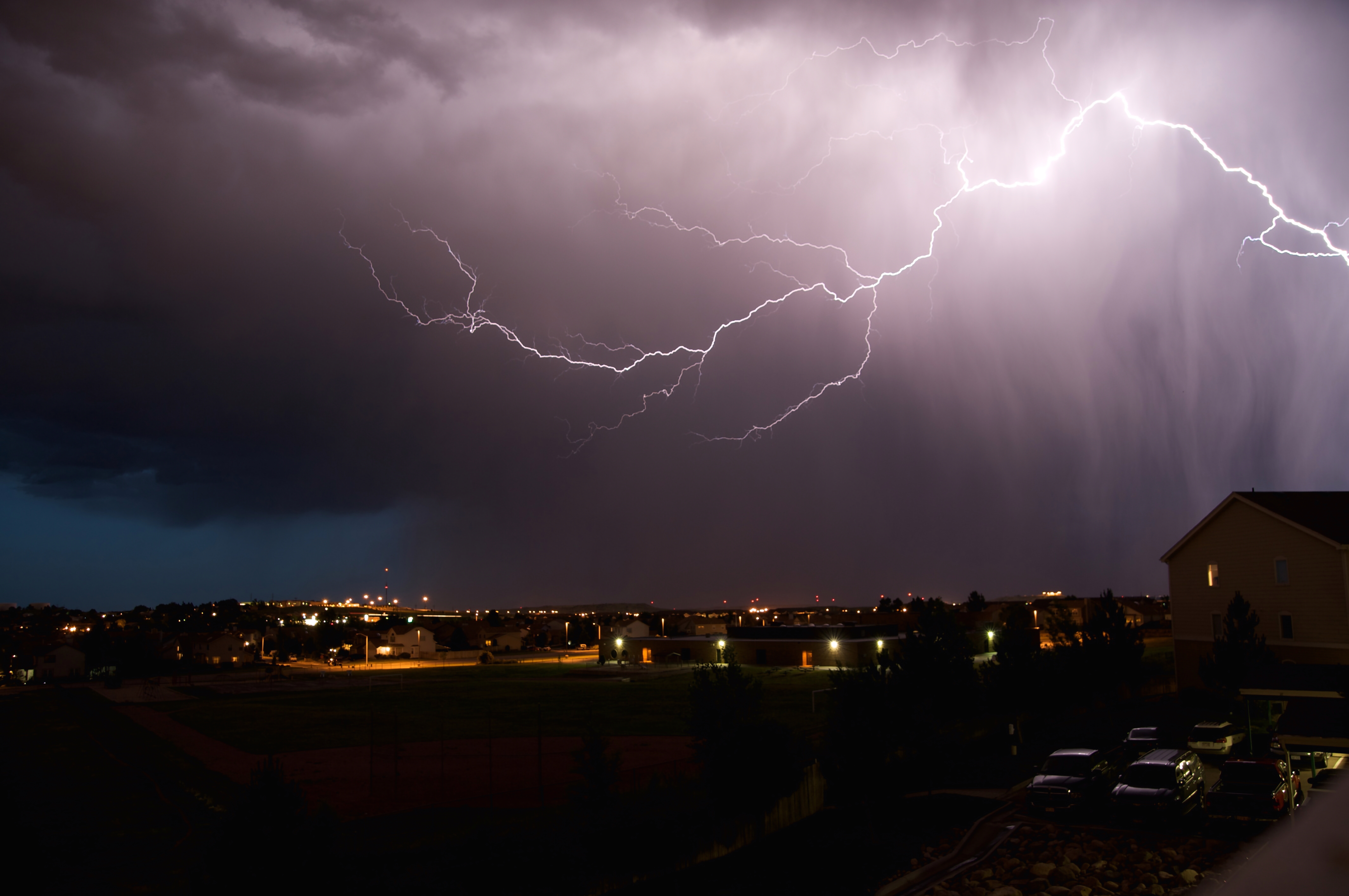Storm season can wreak havoc on your Charlotte, NC home. With hurricane season running from June to November, storm damage is an ongoing concern. Unfortunately, not all storm damage is conspicuous. While some roof leaks cause bulging ceilings and blistered paint, others quietly break down roofing substrate, siding, and rough framing in areas that homeowners can’t see. To help you keep your home protected, the following are eight ways to know if your roof has storm damage.
1. Detached, Broken, or Clogged Gutters
After every major weather event, look for detached, broken, or clogged gutters. Heavy build-ups of twigs, silt, leaves, and other organic materials can cause gutters to pull away from buildings. Strong winds can do the same. If your gutters are nearing the end of their lifespan, look for rust, corrosion, and other accelerated wear. Rusted areas are all weak points where storm-battered gutters might erode or break. You should also clean your gutters out before the next weather event rolls in. This way, they won’t be overwhelmed with debris and unable to route water away from the building.
2. Missing, Bent, or Broken Shingles
Shingle loss is the most common form of roof damage, especially in areas like Charlotte, which can experience wind speeds of up to 75 mph and higher. Strong winds can break the adhesive seals on the backs of shingles and cause them to lift, curl, break, or separate from the building entirely. While you may be able to replace one or two shingles on your own, you should always have widespread shingle loss or shingle damage addressed by a professional.
3. Nail Pops
When major storms cause dramatic temperature shifts, be on the lookout for nail pops. These are nails that protrude from the roof’s surface. Nail pops create tiny points of ingress for moisture. They develop as warm weather causes roofing materials to expand and sudden influxes of cold weather cause them to rapidly contract. Although nail pops won’t spell disaster for your roof anytime soon, they undermine the integrity of this multi-layer system and keep it from providing a truly watertight barrier.
4. Discolored Ceilings
Among some of the more obvious signs of roof damage are bulging or discolored ceilings and active drips at the building interior. However, these problems don’t always manifest in visible, high-activity areas. You might find ceiling discoloration, blistered paint, and dripping water in your pantry, laundry room, or closets.
5. Odors and Excess Moisture in Your Attic
Take a quick peek in your attic to check for standing water and wet insulation. Other signs of storm damage that you might find in your attic include strong, musty, or moldy odors and visible mold or mildew.
6. Ripped or Torn Flashing
Flashing is a thin layer of metal that protects vulnerable roofing areas. Your roof has flashing around all chimneys, vents, skylights, and other protrusions. Flashing is also found at roof valleys where two sections of roofing meet. If you see bent, ripped, or torn metal in any of these spaces, contact a roofer right away.
7. Evidence of Major Tree-Fall
Among the best ways to protect your home from storm damage is by regularly limbing your trees. Professional tree pruning services remove weak, broken, diseased, and dying branches and limbs. This way, when a major storm hits, they won’t come crashing down. Tree care experts can also thin out dense canopies to limit the risk of having entire trees uprooted or break at their base. If you have lots of twigs and branches on your roof or in your yard, there’s a good chance that your roof has sustained impact-related damage and it may be taking water in.
8. Soffit and Fascia Damage
Much like your gutters and downspouts, soffit and fascia help route water away from your home and your home’s foundation. Pooling water in your attic or “roof void” is a sure sign of soffit and fascia damage. However, you should also check the siding just beneath these features for discoloration, warping, cracking, and other deformations.
The best way to identify roof damage after a storm is by scheduling a professional storm damage inspection. Having roofers assess the integrity of your roof after major weather events will keep minor and developing problems from spiraling out of control.
Since 1994, we’ve been proudly serving Charlotte, NC and the surrounding communities. We offer top-notch roof replacement, inspection, and repair services. We’re also a trusted provider of quality storm damage repairs. To schedule an appointment, get in touch with Blue Fox Roofing & Renovations today.




